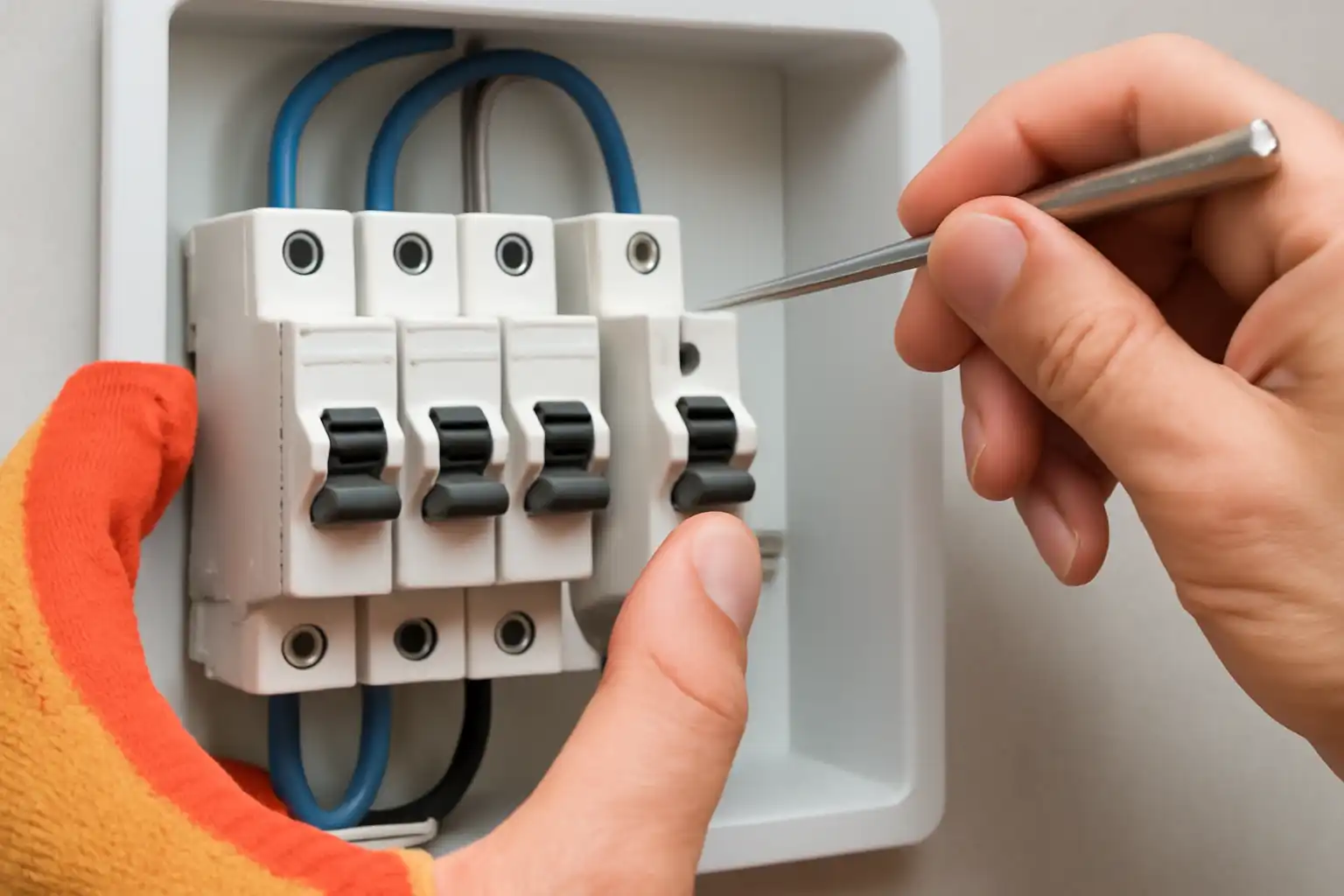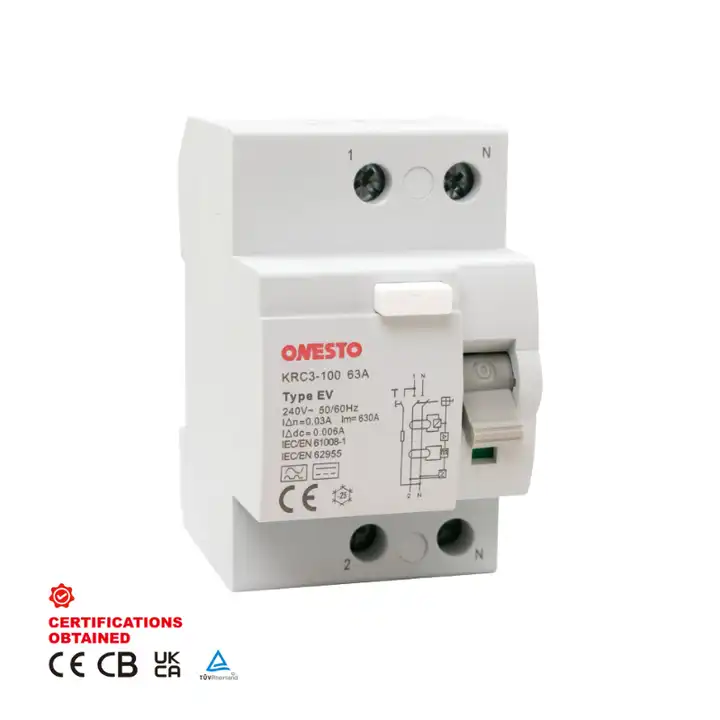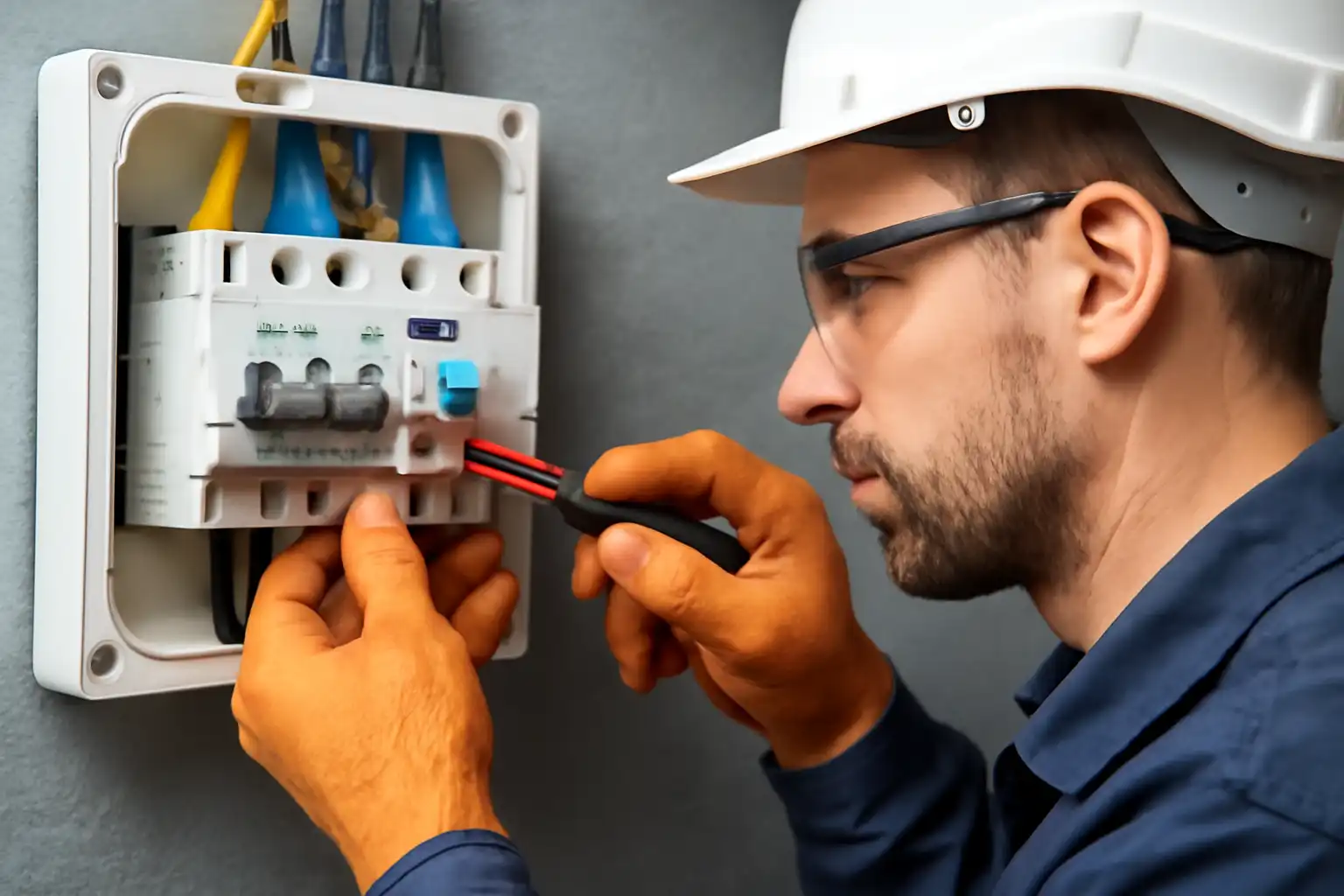RCCBs are crucial for maintaining the safety of your electrical system. However, they can become RCCB damaged for various reasons. Electrical issues, such as ground leakage, can put stress on the device and cause it to fail. Wet conditions, including moisture or water, can lead to rusting of its internal components. Improper handling, such as incorrect installation or the use of outdated tools, can also result in RCCB damaged. Understanding these causes is essential for ensuring your electrical system remains safe and functions effectively.
Key Takeaways
- RCCBs can stop working due to ground faults, water, or bad setup. Checking them often helps find problems early.
- Water can cause rust and make RCCBs short out. Use covers and dehumidifiers to keep them safe.
- Fix appliances to stop leaks that can harm RCCBs. Taking care of them can make them last longer.
- Use surge protectors to block power spikes. Don’t overload circuits to keep RCCBs working well.
- Get a skilled electrician to set up and fix RCCBs. A good setup makes them work safely and properly.
Common Causes of RCCB Damaged
Ground Faults and Leakage Currents
Ground faults and leakage currents often cause RCCB problems. These happen when electricity leaves its path and flows into the ground. This can result from broken wires, bad insulation, or loose connections. If leakage currents go beyond the RCCB’s limit, it trips to stop danger.
Frequent RCCB tripping may mean ground faults exist. This shows hidden problems in your electrical system. For example:
- Damaged insulation: Old or cracked insulation can expose wires, causing leaks.
- Improper grounding: Bad grounding makes it easier for current to escape.
- Moisture exposure: Water can carry electricity, creating leakage currents.
Fixing these problems quickly can save your RCCB and keep your system safe.
Moisture and Water Intrusion
Moisture harms electrical systems quietly. If water gets into your RCCB or nearby parts, it can cause rust, short circuits, and failure. This often happens in humid places or where panels face rain or leaks.
Water can ruin your RCCB’s inside parts, making it weaker over time. You might see rust, less sensitivity, or even total failure. To stop this, try these tips:
- Seal electrical enclosures: Cover outdoor panels with weatherproof materials.
- Inspect for leaks: Check for water near your electrical setups often.
- Control humidity: Use dehumidifiers in damp areas.
Keeping moisture away helps your RCCB last longer and lowers electrical risks.
Faulty or Damaged Appliances
Broken appliances can also harm your RCCB. If an appliance has an internal problem, it might cause big leakage currents or short circuits. This stresses your RCCB, making it trip a lot. Over time, this wears it out and makes it less useful.
Common causes include:
- Old or poorly maintained appliances: Devices with worn cords or broken parts cause trouble.
- High-power equipment: Machines like heaters or air conditioners can overload circuits.
- Improper repairs: Fixing appliances with bad parts can create new problems.
To protect your RCCB, keep appliances in good shape. Regular checks and replacing broken devices can stop extra strain on your system.
Electrical Surges and Overloading
Electrical surges and overloading often cause RCCB problems. Surges happen when voltage suddenly increases. Lightning, power outages, or bad wiring can cause this. These surges can harm your RCCB’s inside parts. Overloading occurs when too many devices use one circuit. This makes the circuit overheat and damages the RCCB.
You can protect your RCCB by doing these things:
- Install surge protectors: They block extra voltage from reaching your RCCB.
- Avoid overloading circuits: Use different outlets for your devices to reduce strain.
- Monitor high-power devices: Big appliances like heaters use lots of power. Use them carefully to avoid problems.
By stopping surges and overloading, your RCCB will last longer. This also keeps your electrical system safer.
Improper Installation and Aging Components
Bad installation and old parts can harm your RCCB. If installed wrong, it might not work properly. Loose wires, wrong connections, or using the wrong RCCB type can cause trouble. Over time, RCCB parts wear out and become less effective. Older systems may not meet today’s safety rules.
To fix these issues, try these tips:
- Hire a qualified electrician: Experts install RCCBs correctly and follow safety rules.
- Replace aging components: Check your RCCB often to find worn-out parts early.
- Upgrade outdated systems: Old systems should be replaced with newer, safer ones.
These steps help prevent RCCB damage from bad setups or old parts. They also keep your electrical system working well and safely.
Diagnosing RCCB Malfunction
Recognizing Signs of RCCB Issues
Spotting RCCB problems early can stop electrical dangers. Frequent tripping might cut power suddenly. This often means ground faults or leakage currents exist. If the RCCB doesn’t trip during a fault, it could be damaged or less sensitive.
Physical signs can also show problems. Check for burn marks, rust, or strange sounds near the RCCB. These may mean overheating or electrical surges. Humid areas can cause rust or corrosion on the device. Regular checks help you find these issues before they get worse.
Testing RCCB Performance
Testing makes sure your RCCB works well in different situations. You can use these tests to check its performance:
| Test Type | What It Checks |
|---|---|
| Mechanical Test | Checks if the RCCB opens and closes without breaking. |
| Thermal Test | Measures how hot the RCCB gets during normal current flow. |
| Dielectric Test | Tests if the RCCB can handle high voltage without failing. |
| Short-Circuit Test | Examines how the RCCB reacts to sudden short circuits. |
These tests show how the RCCB handles stress, heat, and voltage changes. For example, thermal tests show if it overheats during regular use. Dielectric tests check if it can handle strong voltage safely. Doing these tests often keeps your RCCB safe and working.
Pinpointing the Root Cause of Damage
Finding why an RCCB fails needs careful checking. Look for ground faults or leakage currents in the system. Broken wires or bad appliances often cause these problems. Check for rust or water stains near the RCCB to spot moisture damage.
Also, check for electrical surges or overloaded circuits. Burn marks or melted parts can mean too much voltage or current. Bad installation or old parts can weaken the RCCB over time. Loose wires or outdated components often cause trouble. Fixing these problems stops future issues and keeps your system safe.
Fixing and Replacing RCCB Damage
Repairing Small Problems
You can fix small RCCB problems without replacing it. Regular checks help keep your RCCB working well. Look for cracks, loose wires, or rust during inspections. Fixing these early stops bigger issues later. For example, clean rusty parts or tighten loose screws to make it work again.
Testing your RCCB often ensures it trips when needed. If it trips slowly or less often, ask an expert to adjust it. These small fixes save money and make your RCCB last longer. Regular care keeps your electrical system safe and reliable.
When to Replace a Broken RCCB
Sometimes, fixing an RCCB isn’t enough. Replace it if it’s badly damaged or doesn’t trip during faults. Burn marks, melted parts, or constant problems mean it’s time for a new one. Old RCCBs may not meet today’s safety rules, making them less useful.
Replacing a broken RCCB keeps your system safe. Pick a good-quality RCCB that fits your setup. Hire a skilled electrician to install it correctly. A new RCCB gives you better safety and peace of mind at home or work.
Preventing Outside Damage
Outside factors can harm your RCCB. Fixing these stops future problems. For example:
- Use devices to block high currents during short circuits.
- Follow safety rules like IEC 61008 for reliable RCCB performance.
- Install autoreclosing tools to stop reclosing when insulation is bad.
These steps protect your RCCB from outside risks and make it last longer. Solving these problems lowers the chance of RCCB damage happening again.
Preventing RCCB Damage

Regular Maintenance and Inspections
Taking care of your RCCB helps it work well. Check it often for cracks, rust, or loose wires. Small problems can grow if left unfixed.
Testing the RCCB is also important. Press the test button to see if it trips. If it doesn’t, it might be damaged or less sensitive. Have a professional check it once a year to find hidden issues. These steps keep your RCCB safe and prevent electrical dangers.
Protecting Against Environmental Factors
Moisture can harm your RCCB and make it fail. Water or high humidity can rust its parts. To protect it, use weatherproof covers for outdoor setups. These covers block rain and dust.
In damp indoor places like basements, use dehumidifiers to lower moisture. Look for leaks near electrical panels and fix them quickly. Keeping moisture away helps your RCCB last longer and work better.
Using Quality Electrical Components
Good-quality parts make your RCCB safer and stronger. For example:
- A 30mA RCCB stops power when it detects small leaks.
- It works well in wet areas by sensing tiny current changes.
- Self-testing features help it last longer with less upkeep.
Using strong and reliable parts lowers the chance of damage. It also keeps your electrical system running smoothly, giving you peace of mind.
Ensuring Proper Installation Practices
Installing an RCCB the right way is very important. It helps the RCCB work well and protect your electrical system. A properly installed RCCB can sense small leakage currents, like 5 milliamps (mA). It can cut off power in just 30 milliseconds. This quick action is vital because even 10 mA can cause muscles to freeze, making it hard to let go of an electric shock. Placing the RCCB at the start of the circuit protects everything connected to it.
Follow these simple steps for correct installation:
- Pick the right rating: Make sure the RCCB can handle the circuit’s load.
- Read the instructions: Follow the steps given by the RCCB maker.
- Check the wiring: Ensure all wires are in the correct spots.
- Follow local rules: Install the RCCB according to local safety codes.
| Guideline | What to Do |
|---|---|
| Right Rating | Use an RCCB that fits the circuit’s needs. |
| Instructions | Follow the maker’s guide for proper setup. |
| Wiring | Make sure wires are connected correctly. |
| Local Rules | Meet local electrical safety standards. |
Tip: Always ask a skilled electrician to install your RCCB. They know how to set it up safely and follow all rules.
Good installation improves the RCCB’s performance and lowers the chance of problems later. By doing this, your electrical system will stay safe and work well for a long time.
RCCB parts can break due to ground faults, water, or bad setup. You can stop these problems by finding and fixing them early. Checking your RCCB often keeps it working well. Experts can help with harder fixes. Doing this makes your electrical system safer and helps your RCCB last longer. Always check and fix issues to prevent sudden failures and keep your system reliable.
FAQ
What is the primary function of an RCCB?
An RCCB finds leakage currents from ground faults. It cuts off power to stop shocks and fires. This keeps people and electrical systems safe.
What should you do if your RCCB trips frequently?
Frequent tripping means problems like ground faults or overloading. Check for broken wires or bad appliances in your system. If it keeps happening, call an electrician to check everything.
What are the signs of a damaged RCCB?
Watch for frequent tripping, burn marks, rust, or strange noises. If the RCCB doesn’t trip during a fault, it might be broken. Testing often helps find these problems early.
What type of RCCB should you choose for your home?
Pick an RCCB with 30mA sensitivity for home use. It protects against electric shocks well. Make sure it follows safety rules and fits your circuit’s needs.
What maintenance steps can extend an RCCB’s lifespan?
Check often for rust, loose wires, or cracks. Test the RCCB monthly with its test button. Keep it dry and away from moisture or dust.
Tip: Always hire a professional for setup and care to keep it safe and working well.
The following information may be of interest to you
How to choose a household residual current circuit breaker
How to Resolve RCCB Tripping Problems at Home
Top 8 Residual Current Circuit Breaker Brands for Home Safety
What Are Residual Current Circuit Breakers and How Do They Work





